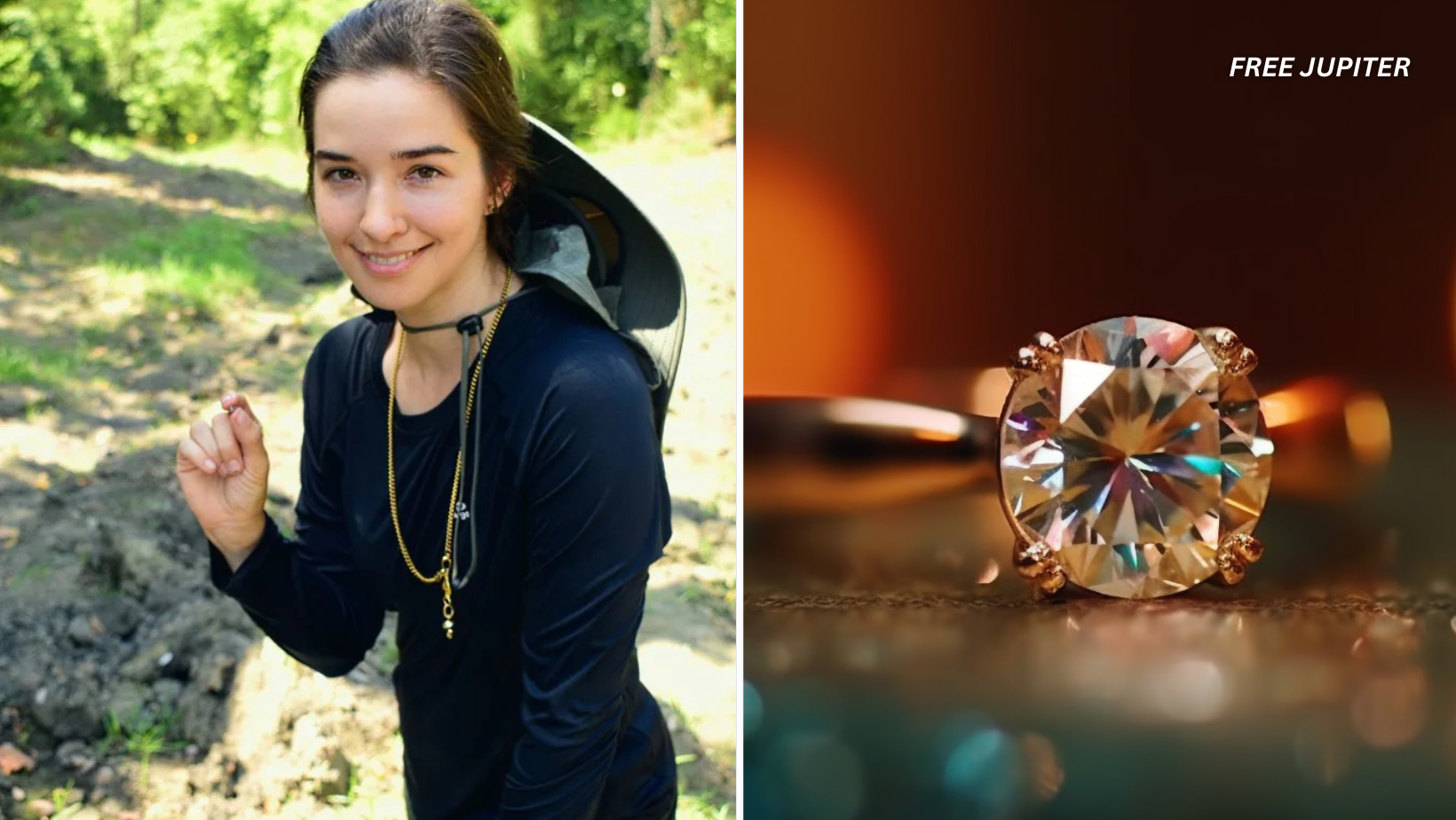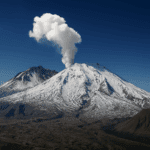Friendly Note: FreeJupiter.com shares general info for curious minds 🌟 Please fact-check all claims—and always check health matters with a professional 💙
For most people, buying an engagement ring involves a trip to a jewelry store, a bit of browsing, and perhaps some careful budget planning. For Micherre Fox of New York City, that process was far too ordinary. She wanted her engagement diamond to be more than just a purchase—she wanted a story.
That desire led her from the bustling streets of Manhattan to the quieter, sunbaked fields of Crater of Diamonds State Park in Murfreesboro, Arkansas. Armed with determination and a willingness to get her hands dirty, Fox spent three weeks in the park searching for a gem that would mark one of the most important moments of her life.
On the very last day of her search, as if the Earth itself had been saving something special for her, she found it—a 2.3-carat white diamond, later confirmed as the third-largest diamond discovered in the park so far this year.
The Crater of Diamonds: A Treasure Hunter’s Playground
The Crater of Diamonds is no hidden gem—at least not in reputation. Known worldwide as one of the only places where the public can hunt for diamonds and keep what they find, it sits on land that was once part of a massive volcanic eruption more than 100 million years ago.
Unlike most diamond-rich regions that require deep mining operations and complex extraction, this area is unusually generous. Erosion over millions of years has brought many diamonds close to the surface, where they can be picked up with nothing more than a keen eye and a bit of patience.
The park spans 37 acres of plowed search fields, surrounded by pine woods and small-town charm. Visitors can bring their own tools or rent equipment like shovels, screens, and buckets. Some people spend hours digging trenches and washing gravel through screens; others, like Fox, prefer the “surface search” method—simply walking and scanning the ground for anything with a telltale shine.
Read more: A New Statue Has Mysteriously Appeared on Easter Island. Seriously.
How the Diamonds Got There: A Geological Time Machine
Diamonds are forged in one of the most extreme environments on Earth—deep within the planet’s mantle, where temperatures soar above 2,000 degrees Fahrenheit and pressures are immense. Here, carbon atoms are compressed into the tight crystal structure that gives diamonds their hardness and brilliance.
But getting these stones to the surface takes a rare and violent geological event. Around 100 million years ago, a deep-source volcanic eruption blasted a vertical pipe of kimberlite magma upward, tearing through the crust and carrying diamonds along for the ride.
The eruption that created the Crater of Diamonds was no gentle affair. It left behind a funnel-shaped deposit of volcanic rock, which over time weathered and released its diamonds into the surrounding soil. Unlike gold, which often settles in riverbeds, diamonds here are scattered across fields, waiting to be spotted.
A History of Spectacular Finds
The Crater of Diamonds has been surprising visitors for over a century. While the land was privately owned in the early 1900s, it became a state park in 1972, ensuring that anyone—professional prospector or casual tourist—could take their chances.
Some of the park’s most famous finds include:
- The Uncle Sam Diamond (1924) – Discovered before the land became a park, this 40.23-carat white diamond remains the largest ever found in the United States.
- The Amarillo Starlight (1975) – A 16.37-carat white diamond found by a Texas visitor, later cut into a 7.54-carat gem.
- The Strawn-Wagner Diamond (1990) – A flawless 3.03-carat white diamond considered one of the rarest in the world; it’s now on display at the park.
- The Esperanza Diamond (2015) – An 8.52-carat white diamond discovered by a tourist from Colorado, later cut into a 4.6-carat jewel valued at hundreds of thousands of dollars.
While most finds are much smaller, these headline-making discoveries keep hope alive for thousands of visitors each year.
Read more: Scientists Think a ‘Dark Mirror’ Universe Could Be Right Beside Ours
Fox’s Three-Week Mission
Fox’s approach to diamond hunting wasn’t rushed. Over three weeks, she explored different zones of the park’s search field, learning the subtle art of spotting diamonds in their natural, uncut state.
Rough diamonds don’t always sparkle like they do in jewelry stores—they can look like cloudy quartz or pieces of glass. But they have a distinctive “metallic” shine and resist scratching, even when rubbed against steel.
On her final day, Fox was walking along the West Drain, a low-lying area where rainwater tends to wash soil away, making gems easier to spot. That’s when she saw it—a flash of brightness against the earth. She bent down, picked it up, and realized she was holding a diamond with enough size and clarity to become the centerpiece of her engagement ring.
Why This Diamond Means More
In the world of jewelry, a 2.3-carat diamond is already a noteworthy prize. But for Fox, its value goes far beyond carats and clarity grades. It’s a stone she earned through persistence, one that carries the story of early mornings, sore muscles, and the satisfaction of not giving up.
When cut and polished, the diamond will likely sparkle brilliantly—but even in its rough form, it already holds a beauty tied to the experience of finding it.
Tips for Aspiring Diamond Hunters
For anyone tempted to follow in Fox’s footsteps, the park offers a few tried-and-true strategies:
- Time your visit after rain – Diamonds often reveal themselves when mud and soil are washed away.
- Look for a glassy-metallic luster – Diamonds reflect light in a way that sets them apart from quartz or feldspar.
- Search low areas – Water naturally carries heavier stones downhill, so diamonds often collect in drains and gullies.
- Be patient and persistent – Some visitors find a gem within minutes; others return for years before striking lucky.
A Park That Blends Science, History, and Luck
Crater of Diamonds is more than just a field—it’s a living classroom where geology, history, and human curiosity intersect. Visitors leave with a deeper appreciation for the forces that shape our planet and the unpredictable ways those forces intersect with human lives.
Whether they walk away with a diamond or just a handful of pretty rocks, most leave with a story—and sometimes, as in Fox’s case, that story becomes part of a lifelong commitment.
Read more: AI Taught Itself to Be Evil—What Could Possibly Go Wrong?
From Rough Stone to Ring
Soon, Fox’s diamond will go through a transformation. Expert gem cutters will study its angles and inclusions to decide how to shape it for maximum brilliance. A 2.3-carat rough stone can yield a polished gem of impressive size, and once set into an engagement ring, it will carry a beauty both visible and invisible—the sparkle of the stone itself and the story of the hunt that brought it to light.
Her journey proves that sometimes the most meaningful treasures aren’t purchased—they’re uncovered, one determined step at a time.










